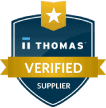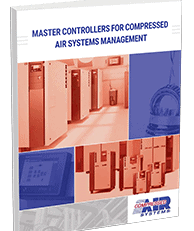Understanding High-Pressure Air Compressors
Used in a wide range of industries, high-pressure air compressor solutions are used in applications that require consistently high pressure and additional pounds per square inch (psi) — generally around 650 psi or higher — to complete certain tasks. Compressor boosters are also available to serve as add-ons for existing systems.
At Compressed Air Systems, we often field questions about the different types of high-pressure systems and their specific properties and benefits. Below, we’ve addressed some of the most frequently asked questions.
How Do High-Pressure Air Compressors Work?
There are two main types of compressors falling under the high-pressure category: standard high-pressure air compressors and high-pressure booster compressors.
Complex and versatile, high-pressure air compressors take ambient air through several stages of compression in order to supply a consistent pressure of up to 6,000 psi. The air is cooled as it moves through each stage in order to compress as much as possible. This allows for optimal amounts of pressure.
High-pressure booster systems, on the other hand, require standard pressure services and inlets of at least 125 psi to allow for discharge pressure ranges of 450 to 640 psi. Using pre-compressed air from existing systems, these add-ons are built for specific points of use; they’re most often used in situations in which plant service air is needed for most services but much higher pressures are required for others.
Most industrial plants are able to handle pressures between 90-100 psi, so boosters are critical for completing many industrial tasks; these serve as cost-effective alternatives to outfitting the entire plant for higher pressures. PET plastic blow molding, for instance, requires very high pressures, so plants may use a booster system to enhance existing systems used for other applications, most of which won’t require nearly as much pressure.
Comprehensive, high-quality compressor systems will also feature controls allowing for automatic filling and remote monitoring, which, in turn, allow for integrated plant-wide monitoring systems. Any issues can then be quickly identified and remedied.
Want to learn more about the High Pressure Compressors we offer? Click the button below to download our guide!
When Do You Need to Use It?
Many air compressing jobs require 6,000 psi or greater — far above the pressure range of most standard systems. Designed for use in any application requiring 650 psi or more, high-pressure air compressors (or, in certain applications, boosters) allow for a consistent supply of high pressure.
In sensitive applications like SCUBA or SCBA, for instance, maintaining a constant, reliable high pressure is critical to ensure users are provided with as much breathing air as possible from a single tank.
What Makes Up a High-Pressure Air Compressor System?
High-pressure compressor systems are comprised of an air compressor, fill stations and tanks, and cylinder fill stations. These systems can also supply air to a cylinder bank, allowing for air supply in peak-demand situations, in which pressure greater than that which the compressor is capable of handling is needed for a limited amount of time.
Both complete air compressor systems and boosters include multi-stage intercoolers to allow for optimal cooling between each step of the process, ensuring optimal pressures are created.
Where Can I Purchase?
To ensure consistent, reliable pressures for your application, it’s critical to partner with a knowledgeable provider who can assist you in the selection process and work with you through any questions or issues you may have.
Compressed Air Systems is a proud provider of industry-leading high-pressure systems from Kaeser , Arctic Air and Sauer, and our expert team is always on hand to help clients with their high-pressure needs. To learn more about these systems, or for help in determining which type of system is right for you, reach out to the team today.










